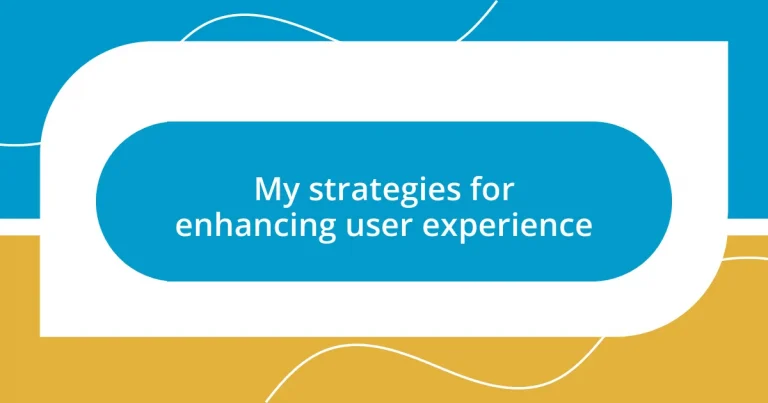Key takeaways:
- User experience design must prioritize usability and empathy, ensuring that aesthetics do not compromise functionality and responsiveness to user needs.
- Defining user personas through deep understanding of users’ demographics, goals, and pain points enhances the design process and creates relatable products.
- Gathering and utilizing user feedback through various methods, such as surveys and focus groups, is crucial for refining designs and ensuring they meet real user needs.
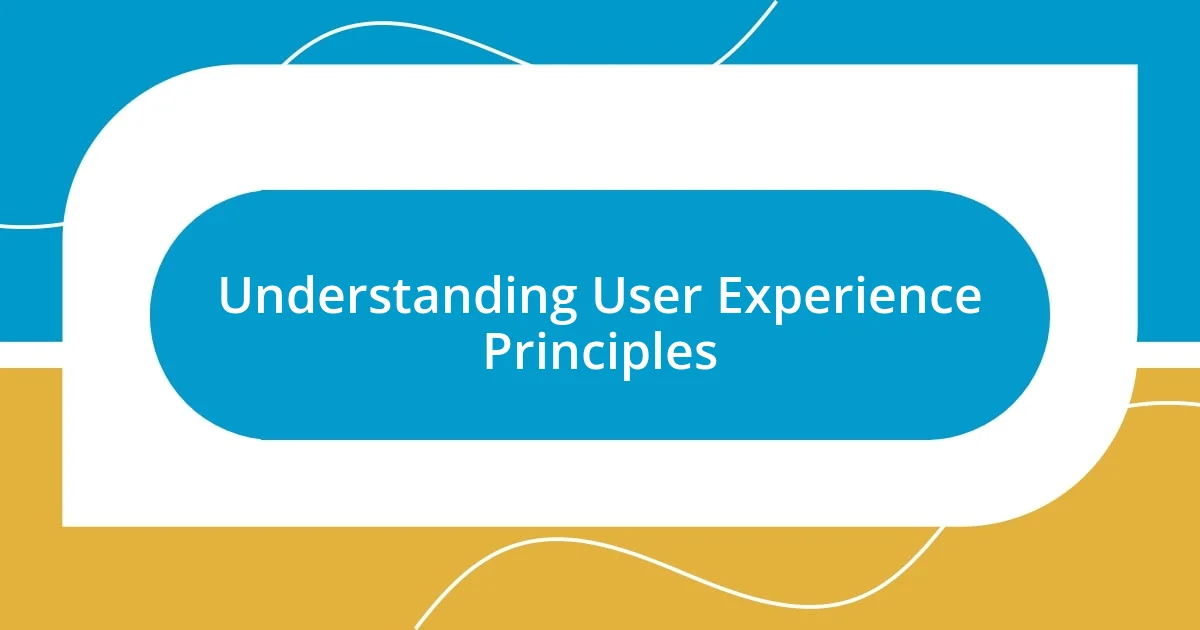
Understanding User Experience Principles
User experience (UX) principles revolve around understanding users’ needs and creating designs that fulfill those needs effectively. I often think about my own frustrations with websites that are cluttered or confusing; when I encounter such platforms, I can’t help but question their design choices. How can their creators be so out of touch with what users actually want?
One principle I always emphasize is usability. I remember working on a project where the initial design was visually stunning but utterly impractical. During usability testing, users struggled to navigate, and it was eye-opening to observe their genuine frustration. That experience taught me that aesthetic appeal should never overshadow simplicity and functionality in design.
Another key aspect is empathy—putting oneself in the users’ shoes. I vividly recall receiving feedback on an app I developed, where users expressed their need for faster load times. Their concerns struck a chord with me; I understood that time is valuable, and a few seconds can mean the difference between a happy user and a frustrated one. Embracing empathy transforms our approach to design, ensuring that we create solutions that resonate deeply with users.
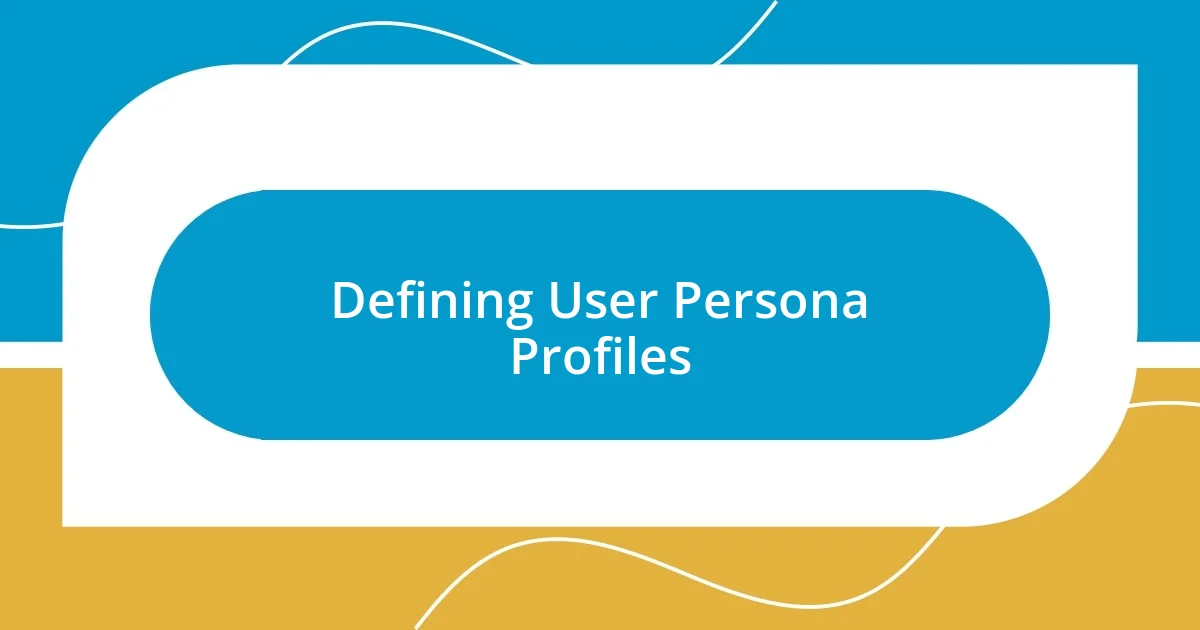
Defining User Persona Profiles
Defining user persona profiles is a crucial step in enhancing user experience. From my experience, creating these profiles requires diving deep into understanding the users—their motivations, behaviors, and preferences. I recall a project where we collaborated with real users to develop detailed personas. Each persona reflected real voices and stories, which made our design process feel more authentic and grounded. It reinforced the idea that behind every interaction lies a unique individual with specific needs.
When crafting user personas, I find it helpful to consider several key factors:
- Demographics: Age, gender, location, and occupation.
- Goals: What tasks do they want to achieve?
- Pain Points: What challenges do they face in achieving those goals?
- Behavior Patterns: How do they interact with technology?
- Motivations: What drives their choices and influences their decisions?
Keeping these elements in mind not only makes the personas more relatable but also enriches the overall design experience, ultimately leading to a product that speaks to users on a personal level.
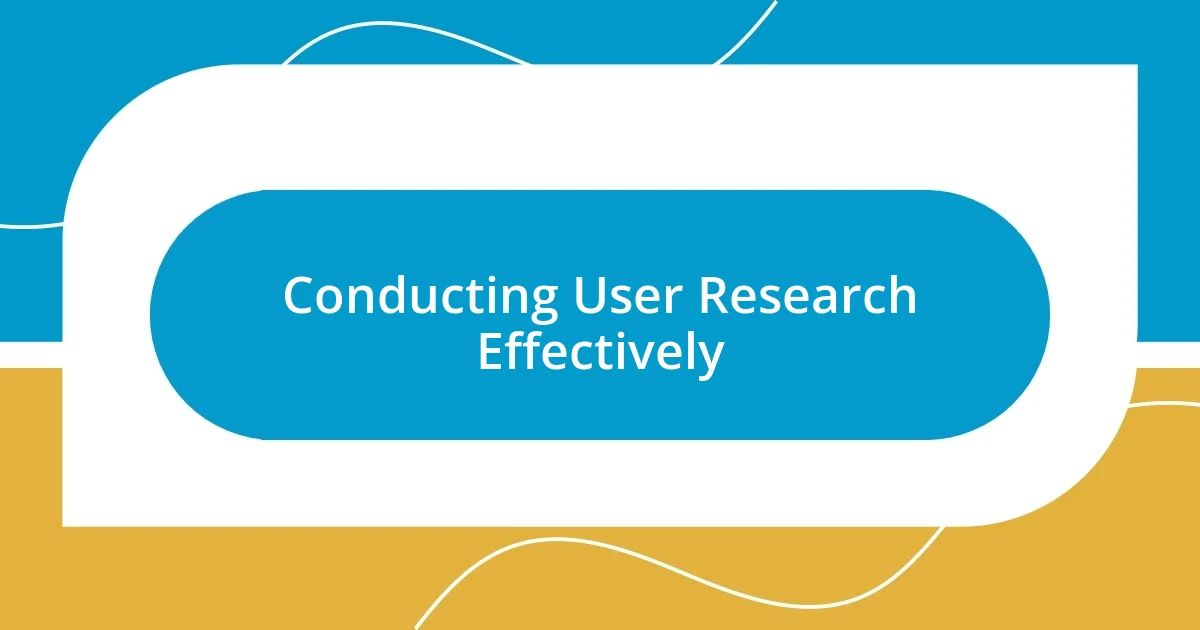
Conducting User Research Effectively
User research is a critical component for truly understanding how to elevate user experience. I recall a time when I set out to gather insights about a product I was developing. I organized a series of interviews with potential users, and what struck me was the depth of information I discovered about their behaviors and preferences. Listening to their thoughts in real-time allowed me to grasp not just the ‘what’ of their needs, but the ‘why’ behind them. This layer of understanding proved invaluable in shaping a user-centered design.
A diverse approach to user research can significantly enhance findings. Combining qualitative methods, like interviews, with quantitative techniques, such as surveys, allows for a well-rounded perspective. This dual approach reminds me of a project where we deployed both strategies; the survey data provided numerical insights, while follow-up interviews humanized those numbers, revealing emotional connections and motivations that numbers alone couldn’t illustrate. The richness of this information fueled a design that resonated deeply with our audience.
Engaging users throughout the research process only deepens the connection we have with them. I once facilitated a workshop where users were invited to co-design solutions. Hearing them brainstorm and express their needs was a transformative experience. Their enthusiasm and creativity not only enriched our design but also created a sense of ownership and investment in the final product among participants. When users feel involved, it cultivates a relationship that ultimately enhances user experience.
| Research Method | Pros |
|---|---|
| Interviews | Provides qualitative insights, fosters emotional connections. |
| Surveys | Generates quantitative data, easier to analyze trends. |
| Workshops | Encourages collaboration, promotes user investment and ownership. |
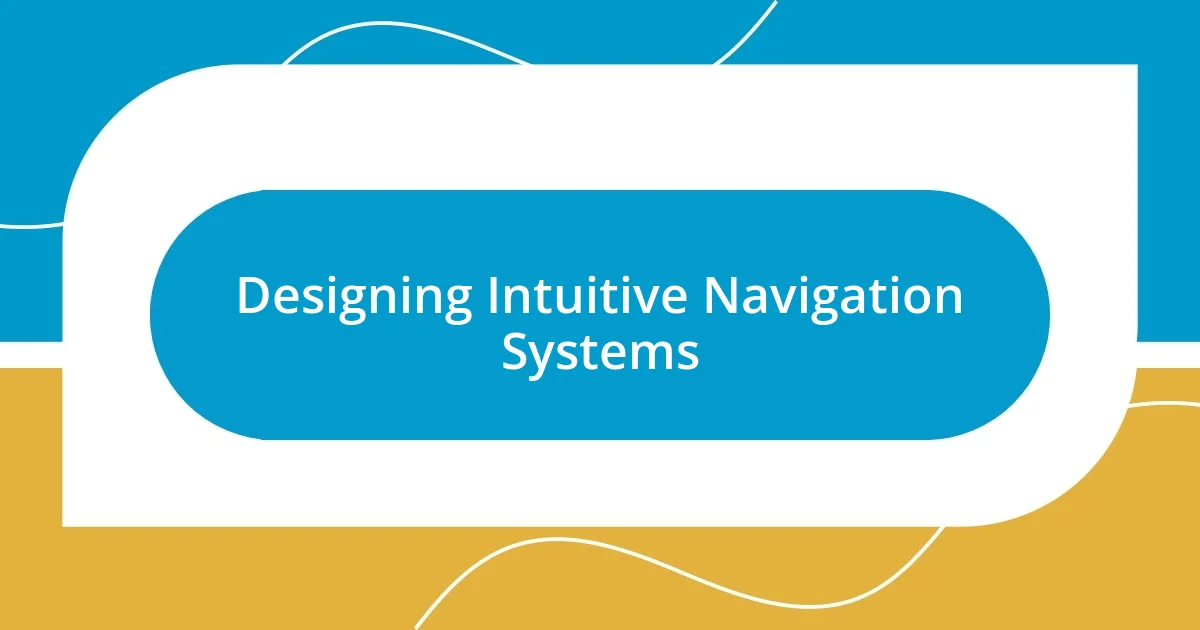
Designing Intuitive Navigation Systems
Designing intuitive navigation systems is like crafting a map that leads users effortlessly to their destination. I often think about a project where we simplified a multi-layered menu into a straightforward, user-friendly layout. Did it make a difference? Absolutely. Users reported feeling less frustrated and more empowered as they navigated through the site, which reinforced my belief that clarity in navigation can dramatically enhance user experience.
In my experience, one key to designing intuitive navigation is to prioritize consistency across all pages. I remember working on an app where our navigation had slight variations on different screens. It confused users and led to increased abandonment rates. By streamlining the design and ensuring that core elements remained the same throughout, we created a familiar environment that instilled confidence and reduced cognitive load. Users were able to flow through the app with ease, as if taking a stroll in their favorite neighborhood.
Another important aspect is understanding user behavior and adapting navigation accordingly. During a recent usability test, I observed users struggling with a complicated dropdown menu. To address this, I facilitated a brainstorming session with the team, and we decided to implement a breadcrumb navigation system. It allowed users to see where they were in relation to the entire site. The reaction was immediate and positive—users felt more in control. I’ve found that tailoring navigation to reflect how users naturally think and move can transform their experience from challenging to enjoyable.
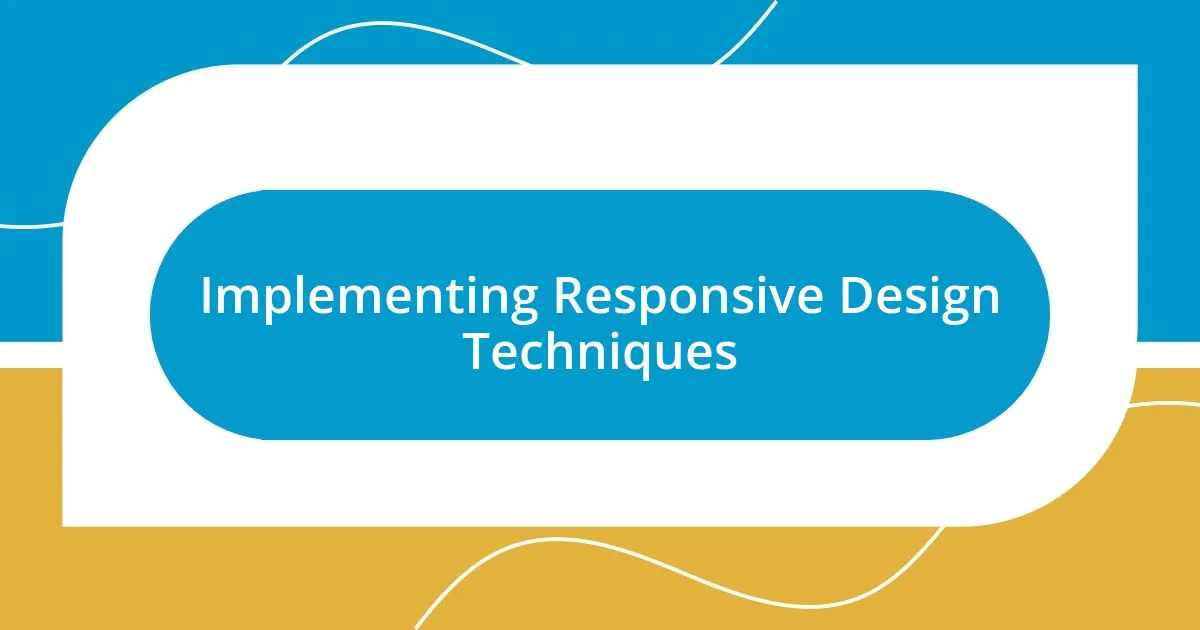
Implementing Responsive Design Techniques
Implementing responsive design techniques is essential in today’s diverse digital landscape. I remember revamping a website that wasn’t adapting well to mobile devices, which frustrated users. The moment we introduced a fluid grid layout and flexible images, the feedback was overwhelmingly positive. It struck me how simply making the design responsive increased user engagement and satisfaction.
One of the most powerful aspects of responsive design is its ability to create a seamless experience, regardless of the device. I recall a time working on an e-commerce site where the mobile version was barely functional. After implementing media queries, users could browse effortlessly on their phones and tablets, leading to a noticeable uptick in conversions. I realized then how crucial it is to eliminate barriers and ensure accessibility across all platforms.
Have you ever revisited a site and found it difficult to navigate on your phone? I certainly have, and it’s never a pleasant experience. By prioritizing touch-friendly elements and ensuring fast load times, I’ve significantly improved users’ interactions. Observing users effortlessly explore the site on various devices brought me immense satisfaction, confirming that responsive design is not just a feature—it’s a vital strategy for enhancing the overall user experience.
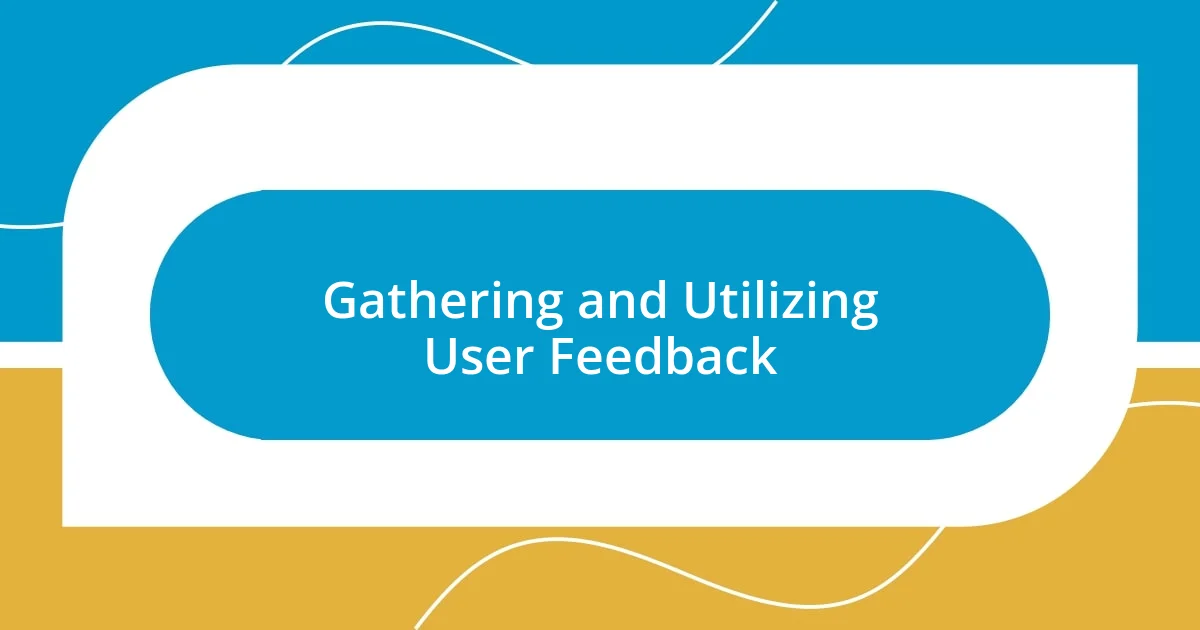
Gathering and Utilizing User Feedback
Gathering user feedback is an invaluable part of enhancing user experience. I remember conducting a simple survey after launching a new feature. Users shared their thoughts, both positive and negative, and it was enlightening to see their perspectives. It reinforced my belief that real users always provide insights that analytics alone can’t capture.
One memorable instance was when a group of users expressed confusion about a recent interface change. Their feedback informed us that clarity was sacrificed for aesthetics. After some brainstorming, we adjusted the design to prioritize user comprehension without compromising our vision. This experience taught me the importance of listening to user concerns—it’s not just about what looks good but about what works best for the people using the product.
It’s fascinating to think about how often user feedback can shape the design process. I find conducting focus groups to be especially effective. There’s something about watching users interact in real-time that reveals so much more than a survey can. Can you imagine witnessing that “aha!” moment when they finally grasp how everything works? Those moments fuel my passion for ensuring that our designs resonate with users and continuously evolve based on their insights.












